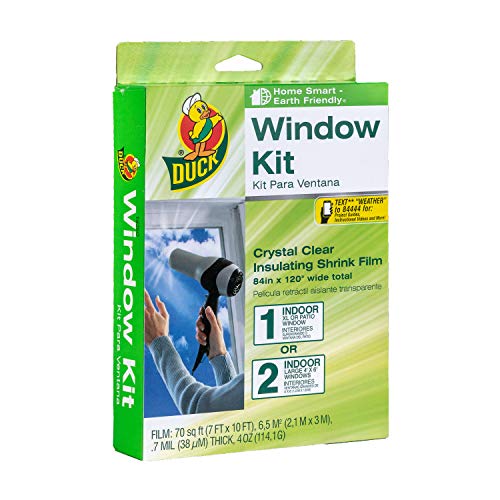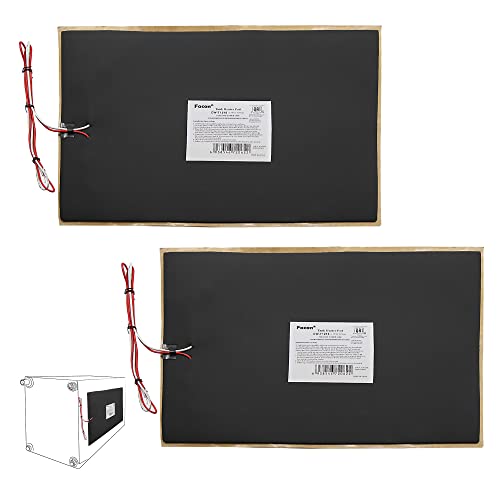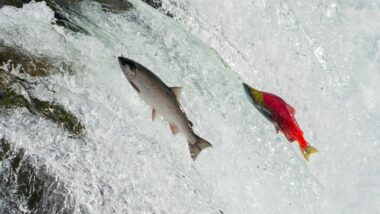Table of Contents Show
Mother Nature and Old Man Winter can cause serious problems for you and your RV. In addition to doing costly damage, they can make it nearly impossible to stay comfortable.
Since the weather forecast can quickly change, you must prepare for almost anything. Luckily, there are several things you can do to protect your RV and stay warm.
Today, we’re sharing several tips and tricks we’ve learned during our adventures in these situations.
Let’s get to it!
Can RVs Handle Freezing Temperatures?
Yes, most RVs can handle freezing temperatures. However, some are better at it than others. Some manufacturers use premium insulation and materials during construction, allowing for four seasons of use.
But even those not built with the highest quality products can handle freezing temperatures, though you and your fellow campers may struggle to stay warm.
While many RVs can handle freezing temperatures, you need to know the risks. The longer temperatures stay and the further they dip below freezing, the more likely your water lines will freeze.
These situations can lead to busted pipes or damaged connections, which lead to leaks. If these go unaddressed for some time, they can lead to extensive and expensive damage.
How Cold Is Too Cold for an RV?
In general, most RVs can handle temperatures well below freezing. You must spend several hours in below-freezing temperatures before you’re likely to experience any issues. As we mentioned, the further below freezing they drop, the less time it will take.
For example, it may only take a few hours for your pipes to freeze when the temperatures dip into the low 20s or teens. You’ll want to take action and make sure you’re prepared. On the other hand, you won’t likely have to do anything if you’ll only experience a few hours below freezing.
How to Protect Your RV and Stay Warm in Freezing Temperatures
You want to stay comfortable, whether it’s an entire season or a short trip in your RV during freezing temperatures. Here are some things we’ve done to keep ourselves, Carmen, and our RV warm and toasty.
Insulate Your RV
Most manufacturers don’t design and build their rigs with freezing temperatures in mind. This is mainly because most owners don’t want to camp in these conditions. As a result, they’ll often skimp on extras, including insulation.
We have some friends who discovered there was no insulation separating their outside kitchen from the bunkhouse. This resulted in the bunkhouse space being nearly impossible to keep warm. A quick trip to a local improvement store was all it took to get the materials to beef up the insulation.
If you’re noticing drafts and cold spots, do some investigating. Foam boards and fiberglass are the most common materials used in these situations. Not only can they deliver some fantastic results, but they’re also relatively easy to find and won’t break the bank.
Skirt Your RV
Skirting your RV is a fantastic option for those in a seasonal or permanent location. This allows you to keep cold air from getting under your camper, which causes your furnace to work harder and can lead to frozen water lines.
If you want a cheap and effective solution, this can easily be your next weekend DIY project. All you’ll need is enough foam board to surround the base of your camper, a utility knife, and weatherproof tape. You’ll want to cut the boards to size and use the tape to connect them and fill any gaps.
Learn More: Click to learn Everything You Need to Know About RV Skirting!
Seal Leaks and Slides
Cold air will find its way in if there are holes or gaps, especially around your slides. This will cause the temperature inside your camper to drop quickly. One of the easiest ways to address these issues is by using transparent door and window weather-stripping tape. By using this product, you’ll eliminate those drafts in minutes without creating a mess.
- STRONG BUT SURFACE-SAFE ADHESIVE. Transparent weather sealing tape is made of high-quality, weather-resistant materials...
- AIRTIGHT WEATHER STRIPPING TAPE. The XFasten weatherstripping tape offers an airtight and watertight solution for...
Shrink Film the Windows
The salesperson may have sold you on how your particular rig has massive windows that make it easy to enjoy the view. While this may be true, they’re also horrible for letting heat and cold into your rig. Covering them with shrink film is one of the best ways to reduce these issues.
The folks at Duck know how to make not only quality tape but also window kits. These kits can turn your inefficient RV into a more efficient and warmer space. In addition, since they’re clear, you won’t have to sacrifice whatever stunning view is outside. Depending on how many windows you have, you may need to purchase multiple kits to get the job done.
- Reduce your energy costs by insulating your patio door or large window
- Crystal clear film heat shrinks to seal out drafts and cold
Use Your Tank Heaters
If you have a camper rated for four seasons, it likely has tank heaters. These are like electric blankets that wrap around your water storage tanks to prevent them from freezing. Since your camper has them, you could use them.
Unfortunately, not every camper has a four-season rating, which means there’s a chance your RV doesn’t have them. If that’s the case, we strongly recommend purchasing them ahead of time, especially if there’s a potential you’ll be RVing in cold weather. Facon offers a set for up to 50-gallon tanks to wire into your 12-volt system.
- [✅Exclusive Technology] Facon’s world-famous Tank Heater Pads. Heater Pads are Designed and Engineered to protect RV...
- [✅Thermostat Controlled] Simply turn "ON" the power switch when the outside temperature is near to freezing. The heat...
Use Reflective Window Covers
We already mentioned that your RV windows are some of the biggest culprits for letting cold air into your rig. While the window kits we mentioned can offer some help, reflective window covers are an even better option. However, since these aren’t clear, you’ll have to sacrifice that stunning view.
Since RV windows come in varying shapes and sizes, it’s easiest to go the DIY route with your reflective window covers. These can take some time to make, but they’re relatively easy to do.
All you need to do is order plenty of Reflectix and cut cardboard stencils to match your windows. Use the pattern to trace onto the Reflectix material and cut them to shape.
When finished, you can slide these window covers into place. They’re useful not only in keeping the cold out but also the heat created during the summer from direct sunlight. Once you get them in place, you’ll notice a significant difference.
- Item Weight: 4.6 lb
- Country of Origin: China
Have a Propane Supply (and a Portable Backup)
Propane is one of the most effective and budget-friendly ways to heat your camper when cold outside. As a result, you’ll want to ensure you have a healthy propane supply before the cold weather hits. Additionally, you’ll want to know where you can refill your tanks if and when they’re empty.
Additionally, you don’t have to RV for long before you realize that things can break and not go as planned. As a result, it’s a good idea to have a portable propane heater as a backup.
Mr. Heater is one of the most popular choices in the community. These are great when the unexpected happens and you find yourself in a dangerous situation.
- PORTABLE HEATER: Portable propane heater designed for emergency heat, tents, campers, job sites, porches, decks,...
- HEAT SPACE: Perfect for heating enclosed spaces up to 225 square feet
Wear Warm Clothing
Choose your clothes wisely when experiencing cold temperatures while RVing. When the temperatures drop, it’s not the time to wear shorts and T-shirts. Dressing in layers can give your furnace a chance to take a break every now and then. This can reduce propane usage and help your tanks last as long as possible.
It’s also a good idea to invest in a quality pair of warm socks. During severe situations, the floor of your rig can feel like you’re walking on an ice rink. A pair of thick wool socks can help you keep your feet warm.
Keep in Mind: Keep your pet warm this winter with the cutest winter products for your pets!
Consider Alternative Temporary Housing Options
Many of the options we’ve shared with you require some advanced planning. If you procrastinate taking action, your best option may be to find alternative temporary housing. This could be at a nearby hotel, a warming shelter, or a loved one’s house.
While this may not be ideal, cold weather can be hazardous, especially if unprepared. You don’t want to be stranded or in a difficult position. Be sure to consider all your options, especially when you need to shelter in place for a few days.
Stay Safe in Your RV During Freezing Temperatures
Protecting your RV and staying warm in freezing weather can be difficult. However, if you take the time to prepare and complete several tips we’ve shared, you stand the best chance of staying warm and cozy.
Don’t let Old Man Winter and Mother Nature’s party ruin your adventure plans. Be ready for whatever they throw your way and enjoy a new type of RVing.
Do you have any other tips for staying warm in freezing temperatures?
Last update on 2024-07-25 / Affiliate links / Images from Amazon Product Advertising API











